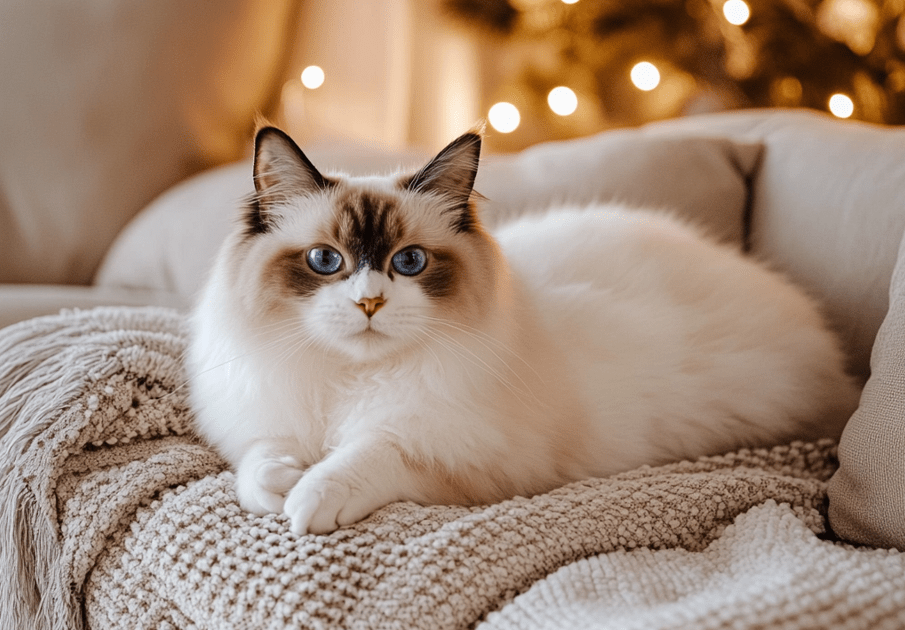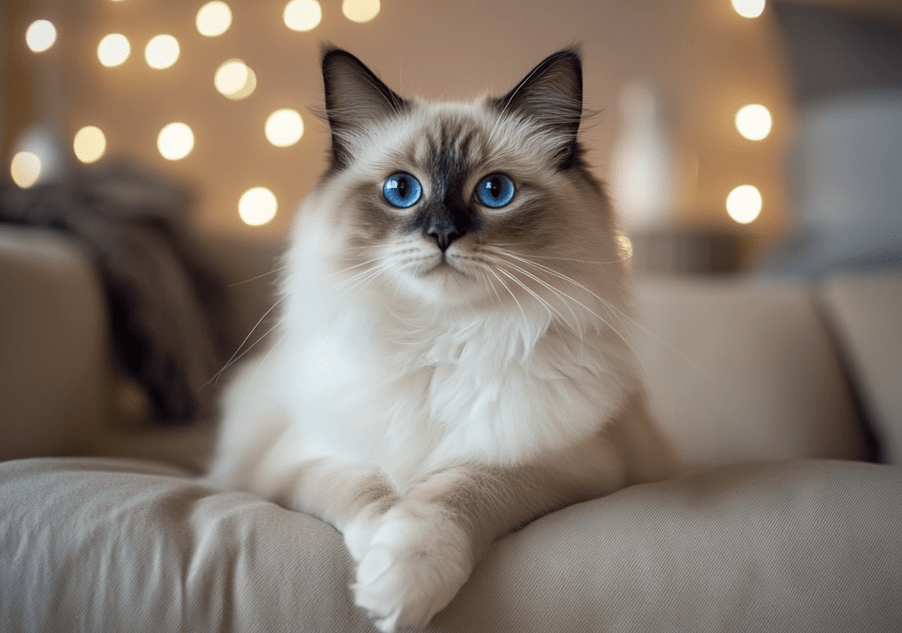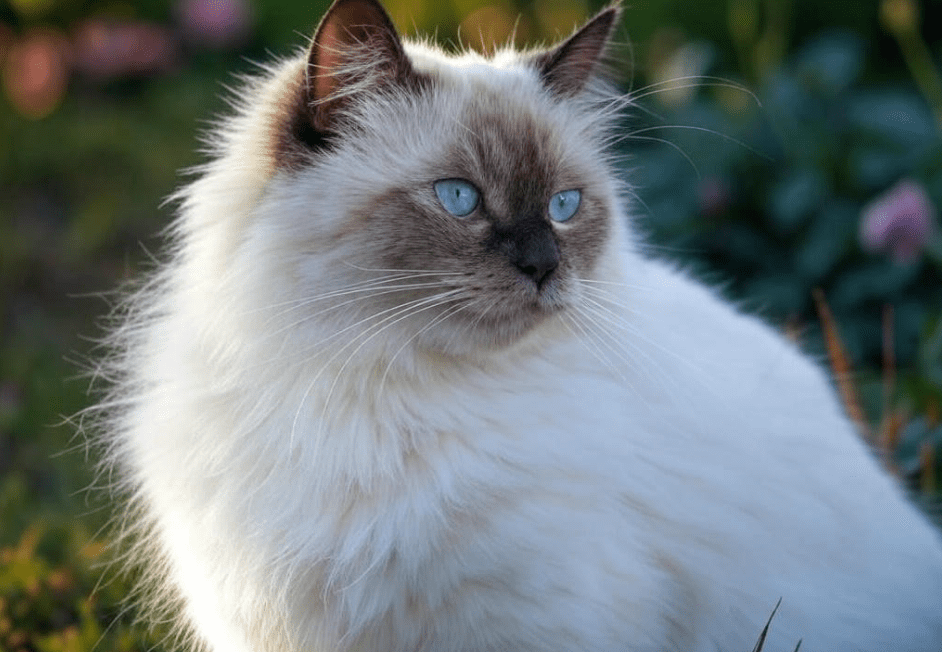
Ragdoll cats are beloved for their gentle temperament, striking blue eyes, and plush, fluffy coats. However, one trait that often surprises Ragdoll owners is their cat’s soft, almost inaudible meow. If you’ve noticed that your Ragdoll cat’s meow is so quiet, you’re not alone. This subtle vocalization is a hallmark of the breed, but it raises questions: Why is their meow so quiet? Is it normal? And what does it mean? In this comprehensive guide, we’ll explore the reasons behind the Ragdoll’s hushed meow, what it communicates, and how you can better understand your feline friend.
Understanding the Ragdoll Cat Breed
To grasp why a Ragdoll cat’s meow is so quiet, it’s helpful to understand the breed’s origins and characteristics. Ragdolls were developed in the 1960s by breeder Ann Baker in California. Known for their docile and affectionate nature, Ragdolls often go limp when picked up, earning their name. They are large, semi-longhaired cats with a calm demeanor, making them ideal companions for families, singles, and seniors alike.
Ragdolls are not as vocal as breeds like the Siamese or Bengal, which are known for their loud, frequent vocalizations. Instead, Ragdolls communicate in softer, more subtle ways, including their quiet meows, purrs, and body language. This breed’s tranquil personality extends to their vocal habits, which is a key reason why their meows are often barely audible.
Key Characteristics of Ragdoll Cats
Temperament: Gentle, affectionate, and sociable.
Size: Large, with males weighing 12-20 pounds and females 8-15 pounds.
Coat: Semi-long, plush, and low-shedding.
Vocalization: Soft, quiet, and infrequent compared to other breeds.
Why Is Your Ragdoll Cat’s Meow So Quiet?
The quiet meow of a Ragdoll cat is a combination of genetics, personality, and communication style. Let’s dive into the primary reasons behind this unique trait:
1. Genetic Predisposition
Ragdolls were selectively bred for their calm and placid nature. Ann Baker prioritized temperament, aiming for a cat that was gentle and easygoing. This selective breeding likely influenced their vocalization patterns, resulting in a breed that doesn’t rely on loud meows to communicate. Unlike breeds bred for assertiveness or territorial behavior, Ragdolls have a softer approach, which extends to their voice.

2. Personality and Temperament
Ragdolls are often described as “dog-like” due to their loyal and relaxed demeanor. They prefer to express themselves through physical affection, such as nuzzling or following their owners, rather than vocal demands. Their quiet meow reflects their laid-back personality—they don’t feel the need to be loud to get attention. Instead, they rely on their charm and subtle vocal cues.
3. Communication Style
Cats use meows primarily to communicate with humans, not other cats. A Ragdoll’s quiet meow is often a gentle request for attention, food, or play. Because Ragdolls are highly attuned to their owners, they may not need to meow loudly to get noticed. Their soft vocalizations are typically enough to convey their needs, especially in a calm household environment.
4. Physical Factors
The anatomy of a Ragdoll’s vocal cords may also play a role. While there’s no definitive research proving that Ragdolls have structurally different vocal cords, their large size and relaxed muscle tone could contribute to softer vocalizations. Additionally, Ragdolls may not exert as much energy into meowing as other breeds, resulting in a quieter sound.
5. Environmental Influence
Ragdolls thrive in peaceful, low-stress environments. If your home is quiet and your cat feels secure, they may not feel the need to meow loudly. In contrast, cats in chaotic or stressful environments may vocalize more to express discomfort or demand attention. A Ragdoll’s quiet meow may simply reflect their contentment and trust in their surroundings.
What Does a Quiet Meow Mean?
A Ragdoll’s soft meow can convey a variety of messages, depending on the context. Understanding the nuances of their vocalizations can deepen your bond with your cat. Here are some common meanings behind a Ragdoll’s quiet meow:
1. Greeting or Affection
Ragdolls often meow softly to say hello or show affection. If your cat meows quietly when you enter a room, it’s likely their way of acknowledging you and expressing happiness.
2. Request for Attention
A gentle meow might be a polite request for petting, playtime, or cuddles. Ragdolls are social cats that crave interaction, and their quiet meow is a subtle way to ask for your time.
3. Hunger or Needs
If your Ragdoll meows softly near their food bowl or litter box, they may be signaling hunger or a need for a clean space. Their quiet tone suggests trust that you’ll respond without them needing to escalate.
4. Contentment
Sometimes, a Ragdoll’s quiet meow is simply an expression of contentment. Paired with purring or relaxed body language, it’s their way of saying, “I’m happy and comfortable.”
5. Mild Discomfort or Anxiety
In rare cases, a quiet meow could indicate mild discomfort or anxiety, especially if it’s more frequent or accompanied by unusual behavior. Pay attention to other cues, such as hiding, reduced appetite, or changes in litter box habits.
When Should You Be Concerned About a Quiet Meow?
While a quiet meow is normal for Ragdolls, there are situations where changes in vocalization could signal a health issue. Here are some red flags to watch for:
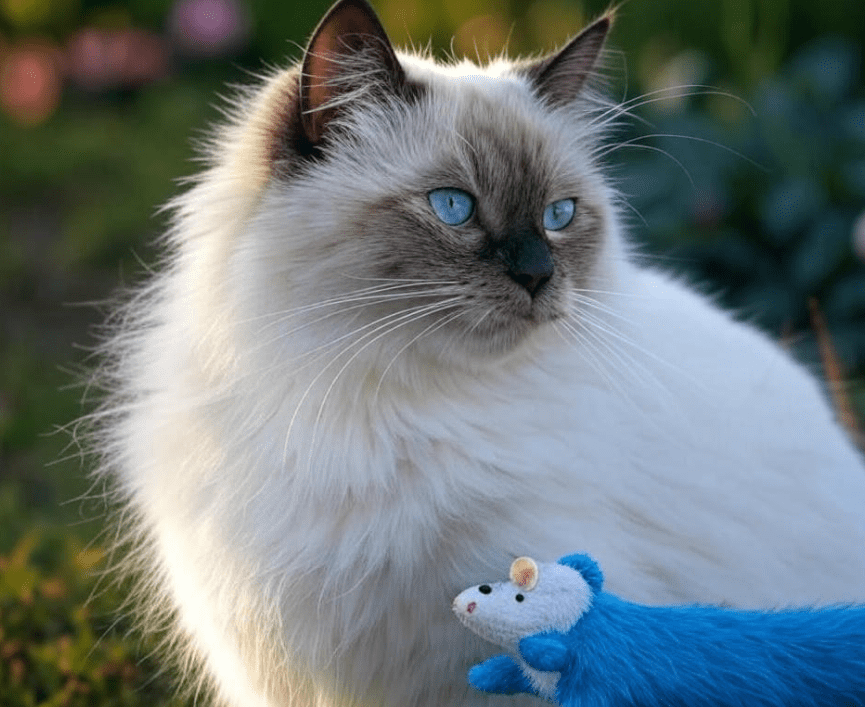
1. Sudden Changes in Vocalization
If your Ragdoll’s meow becomes quieter, hoarser, or stops altogether, it could indicate a health problem. Potential causes include:
Respiratory infections: Upper respiratory infections (URIs) can affect a cat’s ability to meow.
Laryngitis: Inflammation of the larynx can cause a hoarse or silent meow.
Dental issues: Pain from dental disease may make vocalizing uncomfortable.
Thyroid issues: Hyperthyroidism, common in older cats, can affect vocalization.
2. Excessive Quietness or Lethargy
If your Ragdoll becomes unusually quiet, both vocally and behaviorally, it could be a sign of illness or pain. Look for symptoms like lethargy, reduced appetite, or hiding.
3. Persistent Meowing
While Ragdolls typically meow softly, excessive meowing—even if quiet—could indicate stress, hunger, or a medical issue. For example, older Ragdolls may meow more due to cognitive dysfunction or discomfort.
What to Do
If you notice any of these signs, schedule a visit with your veterinarian. A thorough exam, including bloodwork or imaging, can rule out underlying conditions. In the meantime, ensure your cat has a stress-free environment, fresh water, and a balanced diet.
How to Communicate with Your Quiet Ragdoll
Understanding and responding to your Ragdoll’s quiet meow can strengthen your bond. Here are some tips to enhance communication:
1. Observe Body Language
Ragdolls often communicate through body language. A raised tail, slow blinks, or kneading are signs of affection and contentment. Pair these cues with their quiet meows to understand their mood.
2. Respond to Their Cues
When your Ragdoll meows softly, acknowledge them with attention, petting, or a verbal response. This reinforces their trust and encourages communication.
3. Create a Routine
Ragdolls thrive on predictability. Feeding, playtime, and grooming at consistent times can reduce the need for vocal demands, as your cat will feel secure in their routine.
4. Use Positive Reinforcement
Reward your Ragdoll’s quiet meows with treats, praise, or play. This encourages them to continue using soft vocalizations to communicate.
5. Listen for Variations
Pay attention to changes in pitch, frequency, or context. A slightly louder or more urgent meow might indicate a specific need, such as a desire to go outside or access to their litter box.
Comparing Ragdoll Vocalizations to Other Breeds

To put the Ragdoll’s quiet meow in perspective, let’s compare it to other cat breeds:
|
Breed |
Vocalization |
Personality |
|---|---|---|
|
Ragdoll |
Quiet, soft, infrequent |
Calm, affectionate, docile |
|
Siamese |
Loud, frequent, conversational |
Vocal, social, demanding |
|
Maine Coon |
Chirps, trills, moderate volume |
Friendly, sociable, gentle |
|
Bengal |
Loud, raspy, frequent |
Energetic, playful, assertive |
|
Persian |
Quiet, soft, rare |
Quiet, reserved, low-energy |
As the table shows, Ragdolls share their quiet vocalizations with breeds like Persians but stand out for their affectionate and social nature.
Enhancing Your Ragdoll’s Environment for Better Communication
A Ragdoll’s quiet meow is often a reflection of their environment. Here are ways to create a space that encourages healthy communication:
1. Provide Enrichment
Interactive toys, scratching posts, and climbing trees keep your Ragdoll mentally stimulated, reducing stress-related vocalizations.
2. Offer Safe Spaces
Ragdolls love cozy, quiet spots. Provide a soft bed or a perch where they can retreat when they need solitude.
3. Maintain a Calm Atmosphere
Minimize loud noises or sudden changes in the household, as these can make your Ragdoll feel insecure and affect their vocalization.
4. Regular Health Checkups
Annual vet visits ensure your Ragdoll stays healthy, preventing issues that could alter their meow or behavior.
Conclusion
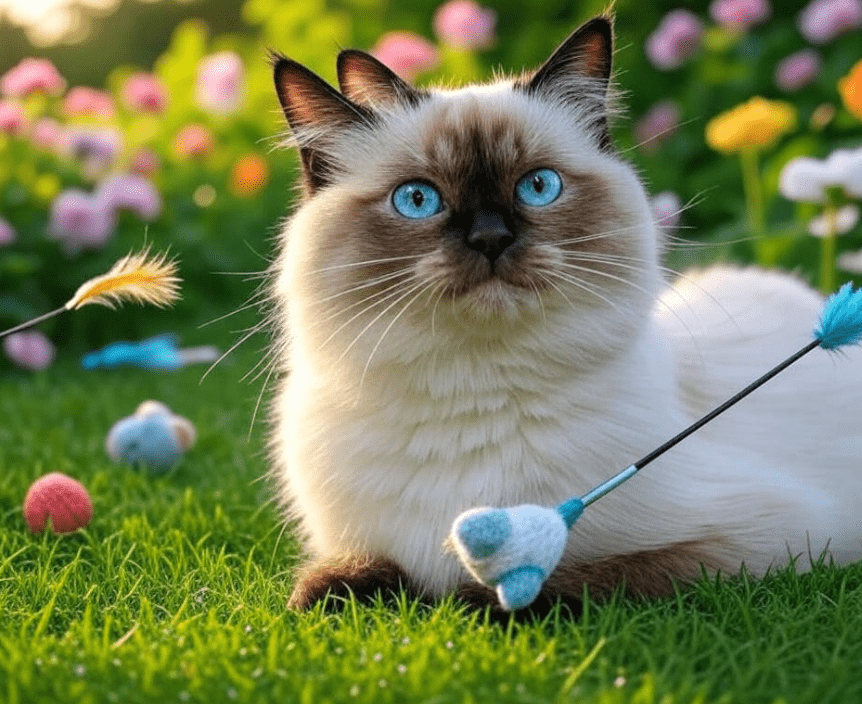
The Ragdoll cat’s meow is so quiet because of their genetics, calm personality, and subtle communication style. This soft vocalization is a charming trait that reflects their gentle and affectionate nature. By understanding the reasons behind their quiet meow and learning to interpret their cues, you can build a deeper connection with your Ragdoll. While their hushed voice is typically normal, stay vigilant for changes that could signal health issues, and provide a nurturing environment to keep them happy and communicative.
Whether your Ragdoll is greeting you with a soft meow or simply purring contentedly, their quiet vocalizations are a reminder of their unique charm. Embrace this trait, and you’ll discover that their subtle voice speaks volumes about their love and trust.


